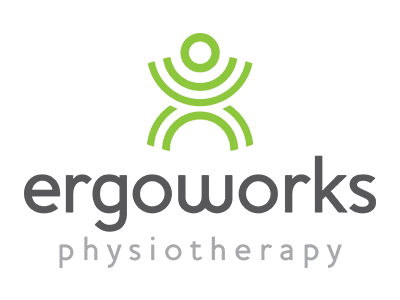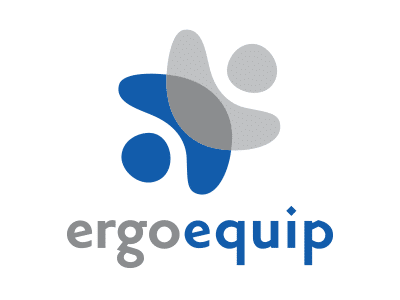Why Every Australian Office Needs a Professional Ergo Assessment

In today’s fast-paced work culture, many Australians spend long hours sitting at their desks. Over time, this can cause discomfort, fatigue, and even long-term injuries that affect both well-being and productivity.
A professional ergonomic (ergo) assessment is more than a simple workplace check-up. It is a proactive step towards creating a healthy, efficient, and comfortable work environment. A well-designed workspace helps employees feel better, perform better, and stay safer. Let’s look at how an ergo assessment can make a lasting difference in your office.
What is an Ergo Assessment?
An ergo assessment is a detailed review of how employees interact with their workspace. It focuses on improving comfort, safety, and efficiency by ensuring that every workstation supports healthy posture and movement.
During an assessment, a trained ergonomics specialist examines desk arrangements, chair positioning, monitor placement, lighting, and daily work habits. Small adjustments to these areas can greatly reduce strain and discomfort, helping employees work more comfortably and productively.
In essence, an ergo assessment fine-tunes the workspace so that people can stay focused, healthy, and effective throughout the day.
Key Benefits of an Ergo Assessment for Australian Offices
- Improved Focus and Productivity
When employees are free from physical discomfort, they can concentrate better on their work. Ergonomic adjustments reduce fatigue and physical strain, allowing staff to maintain focus and energy throughout the day.
- Fewer Workplace Injuries
Poor posture and repetitive movements are common causes of issues such as back pain, eye strain, and wrist injuries. An ergo assessment helps identify these risks early and provides clear, practical solutions, such as adjusting workstation height or recommending supportive chairs.
- Higher Employee Satisfaction
A comfortable workspace shows employees that their well-being matters. When people feel supported and valued, they are more engaged and motivated, and they are likely to stay with the organisation long-term.
Common Workplace Injuries Prevented by Ergo Assessments
- Back Pain: Often results from prolonged sitting or unsupportive chairs.
- Carpal Tunnel Syndrome: Caused by repetitive typing or poor wrist positioning.
- Neck and Shoulder Strain: Develops due to poorly placed screens or awkward posture.
- Eye Fatigue: Linked to poor lighting or incorrect monitor distance.
Simple, informed adjustments can help prevent these common problems, leading to fewer injuries and better overall health at work.
Cost of Ergo Assessments in Australia
The cost of a professional ergonomic assessment in Australia typically ranges from $500 to $2,000, depending on the size of the office and the level of detail required.
Although this may seem like an additional expense, the benefits often outweigh the cost. By preventing injuries, reducing absenteeism, and improving productivity, businesses can see a strong return on investment within a short time.
Legal Responsibilities for Ergonomics in Australian Workplaces
Under Work Health and Safety (WHS) regulations, Australian employers must provide a safe and healthy work environment. While ergonomic assessments are not mandatory, businesses are expected to identify and control risks that may cause strain, discomfort, or injury.
Conducting an ergo assessment helps employers meet these safety obligations and demonstrates a clear commitment to the health and well-being of their staff.
Reducing Workers’ Compensation Claims with Ergo Assessments
Workplace injuries are one of the leading causes of compensation claims. By identifying and resolving ergonomic risks early, businesses can prevent these injuries before they occur.
Fewer injuries mean fewer claims and lower insurance premiums. This not only saves costs but also ensures that employees remain healthy, consistent, and motivated.
Choosing the Right Ergo Assessment Provider
To get the best results, it is important to work with a qualified and experienced provider. Here are a few tips to help you choose the right one:
- Expertise and Certification: Look for professionals with recognised credentials, such as Certified Professional Ergonomist (CPE) or equivalent qualifications.
- Tailored Recommendations: Ensure the provider offers customised solutions suited to your specific workplace and team needs.
- Strong Reputation: Check client reviews and testimonials to confirm their credibility and success in improving office ergonomics.
- Aftercare and Support: Some providers offer follow-up sessions to adjust setups or train employees on proper ergonomic practices. This ensures that the improvements are maintained over time.
Investing in an ergonomic assessment is one of the smartest decisions a business can make. It not only helps prevent injuries but also improves focus, energy, and overall morale. For Australian offices, it is an essential step towards building a workplace that supports long-term health and productivity.
By addressing small ergonomic issues today, you can create a more comfortable, efficient, and resilient workplace for tomorrow.
FAQs
- What are the primary advantages of conducting an ergonomic assessment?
An ergo assessment identifies and corrects workstation issues that cause discomfort. This leads to healthier employees, fewer injuries, and better productivity. - How do I know if my office needs one?
If employees often complain about stiffness, back pain, or fatigue, or if you notice more absences and discomfort, it’s time to schedule an assessment. - Is a workplace ergonomic assessment legally required in Australia?
Not specifically, but under WHS laws, employers must manage risks that can lead to physical strain or injury. An assessment helps you stay compliant. - Can it help reduce absenteeism?
Yes. Better workstation setups lead to fewer repetitive strain and posture-related problems, which means fewer sick days and improved performance. - How long does an assessment take?
A single-workstation review usually takes 30-60 minutes. Larger offices may take several hours. Many providers also offer remote options for hybrid teams.


